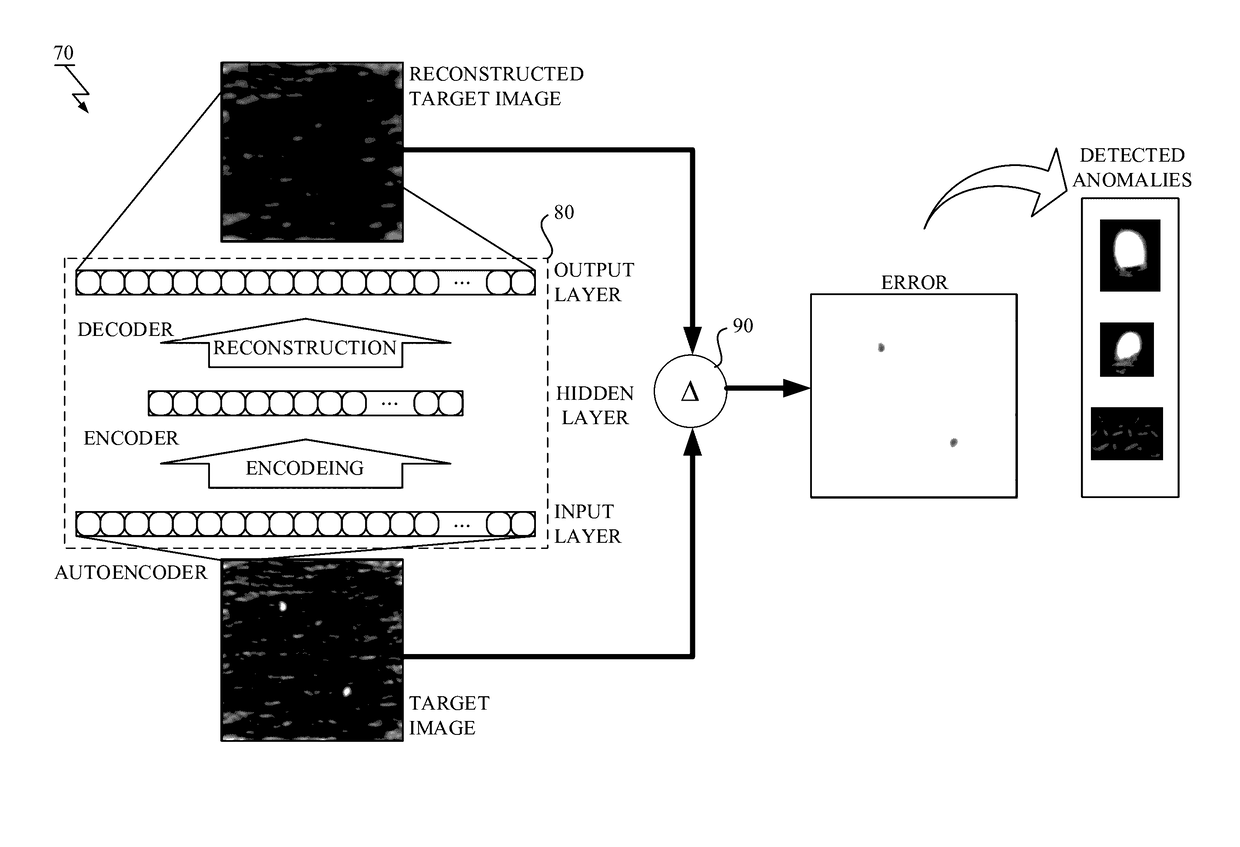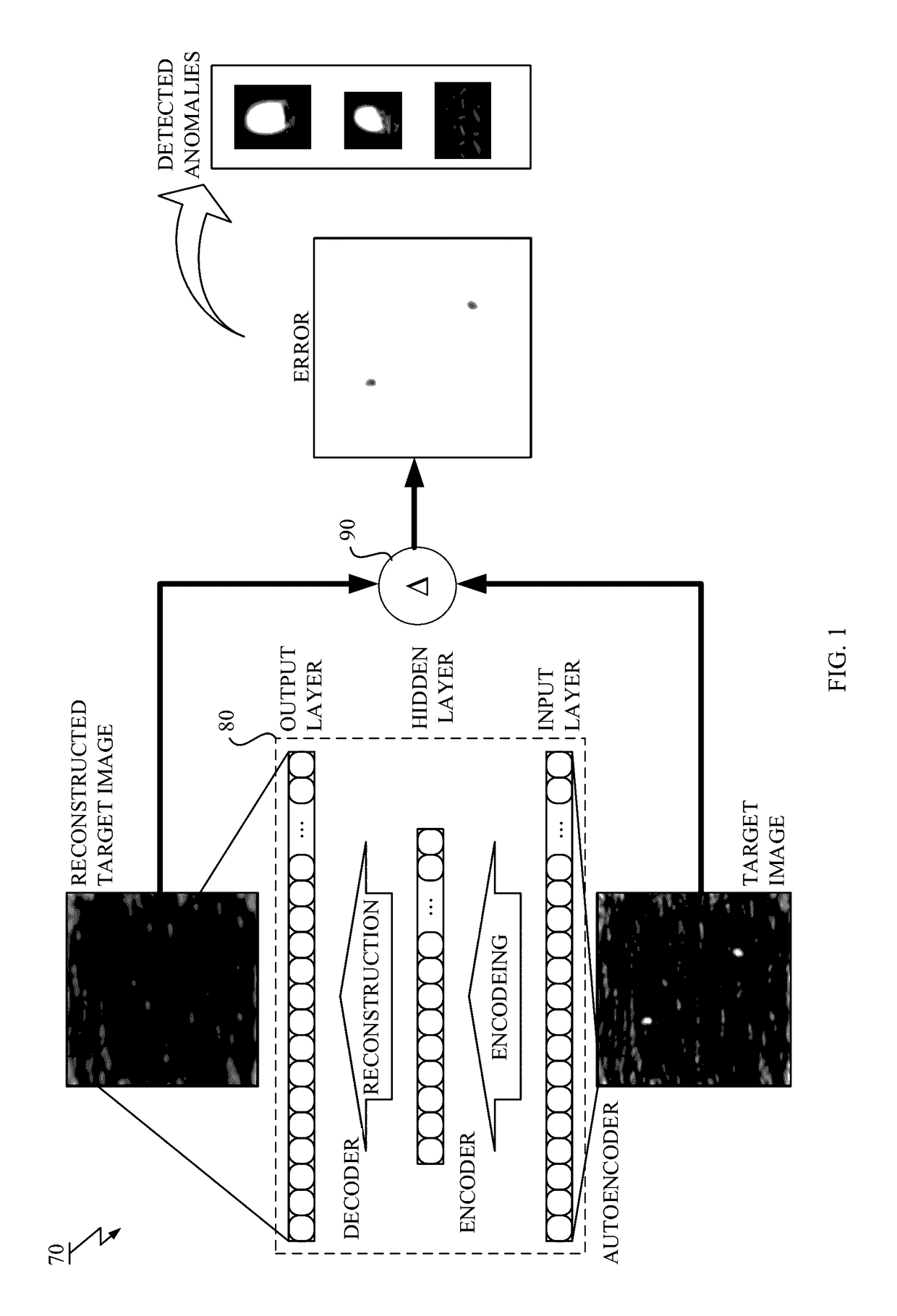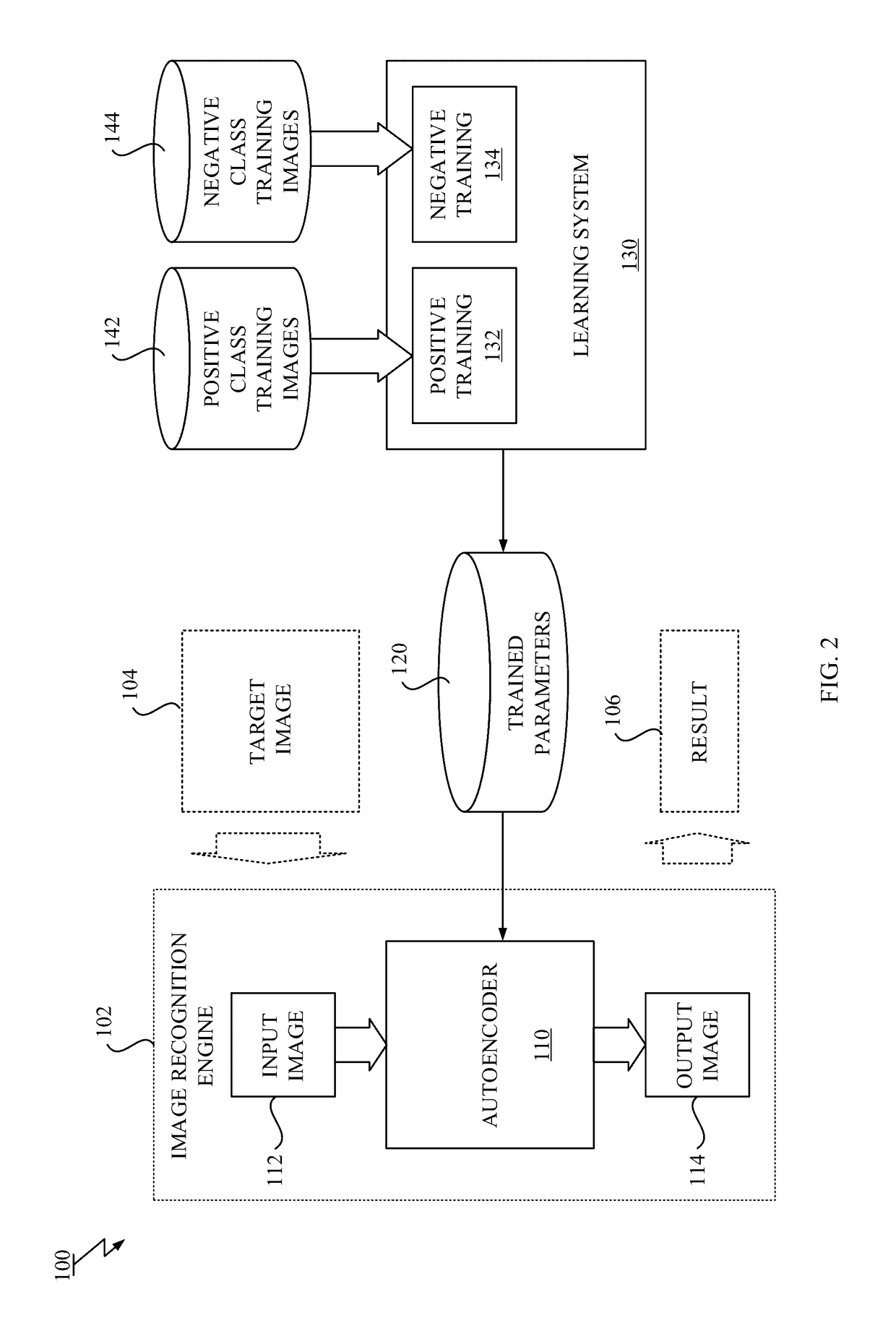Learning of classification model
- Summary
- Abstract
- Description
- Claims
- Application Information
AI Technical Summary
Benefits of technology
Problems solved by technology
Method used
Image
Examples
Embodiment Construction
[0037]The present invention will be described using particular embodiments, and the embodiments described hereafter are understood to be only referred to as examples and are not intended to limit the scope.
[0038]One or more embodiments according to the present invention are directed to methods, computer systems and computer program products for learning a classification model.
[0039]Autoencoders can be used to encode input signals in various applications. Generalization capability of the autoencoders, which is an ability to reconstruct any input signal reasonably well, even though the input signal is unseen data, is a desired feature for typical applications. However, such capability is not preferred for certain application areas such as noise reductions, anomaly detections, etc.
[0040]Referring to FIG. 1, there is shown an anomaly detection system using an autoencoder, in which limiting the reconstruction capability of the autoencoder is preferred.
[0041]As shown in FIG.1, an anomaly ...
PUM
 Login to View More
Login to View More Abstract
Description
Claims
Application Information
 Login to View More
Login to View More - R&D
- Intellectual Property
- Life Sciences
- Materials
- Tech Scout
- Unparalleled Data Quality
- Higher Quality Content
- 60% Fewer Hallucinations
Browse by: Latest US Patents, China's latest patents, Technical Efficacy Thesaurus, Application Domain, Technology Topic, Popular Technical Reports.
© 2025 PatSnap. All rights reserved.Legal|Privacy policy|Modern Slavery Act Transparency Statement|Sitemap|About US| Contact US: help@patsnap.com



